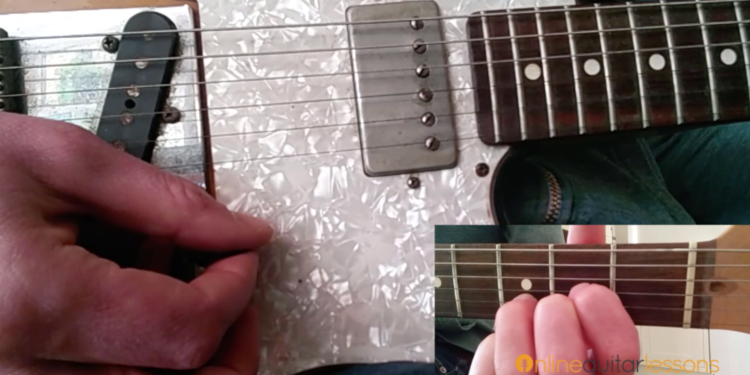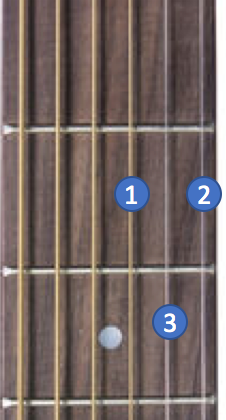
Yet another three-fingered chord, and possibly the jangliest and brightest sounding of them all – D Major. Due to the proximity of the fingers, this one can feel a little fiddly for new players to get used to, but it’s well worth a bit of perseverance and practice.
The other element that makes this chord slightly trickier (only slightly!), is that only the first four strings should be strummed (i.e, starting from the 4th string). Just like the A Major, this means you’ll have the root note (D) in the bass, giving a nice solid foundation for the chord.
The diagram below shows how to layout your fingers, and where to position them to play your first D Major chord:

As you can see, the D Major chord uses the first, second and third fingers. These are placed on the second fret of the third string, the third fret of the second string, and the second fret of the first string.
As always, some players prefer to use other fingers when playing the D Major chord, but over time I’ve found these are the best fingers to use in order to get to and from other chords easily, and also achieve a really clear sounding chord.
When strumming the D Major chord, be really careful not to strike the sixth and fifth strings as it’s really important that the lowest note is D (fourth string).
The short video clip below shows how the fretted fingers and the right-hand strum should come together to play the perfect D Major chord:
Best of luck with playing your first D Major chord, and don’t forget to also work through the other easy chords in our beginner series!



